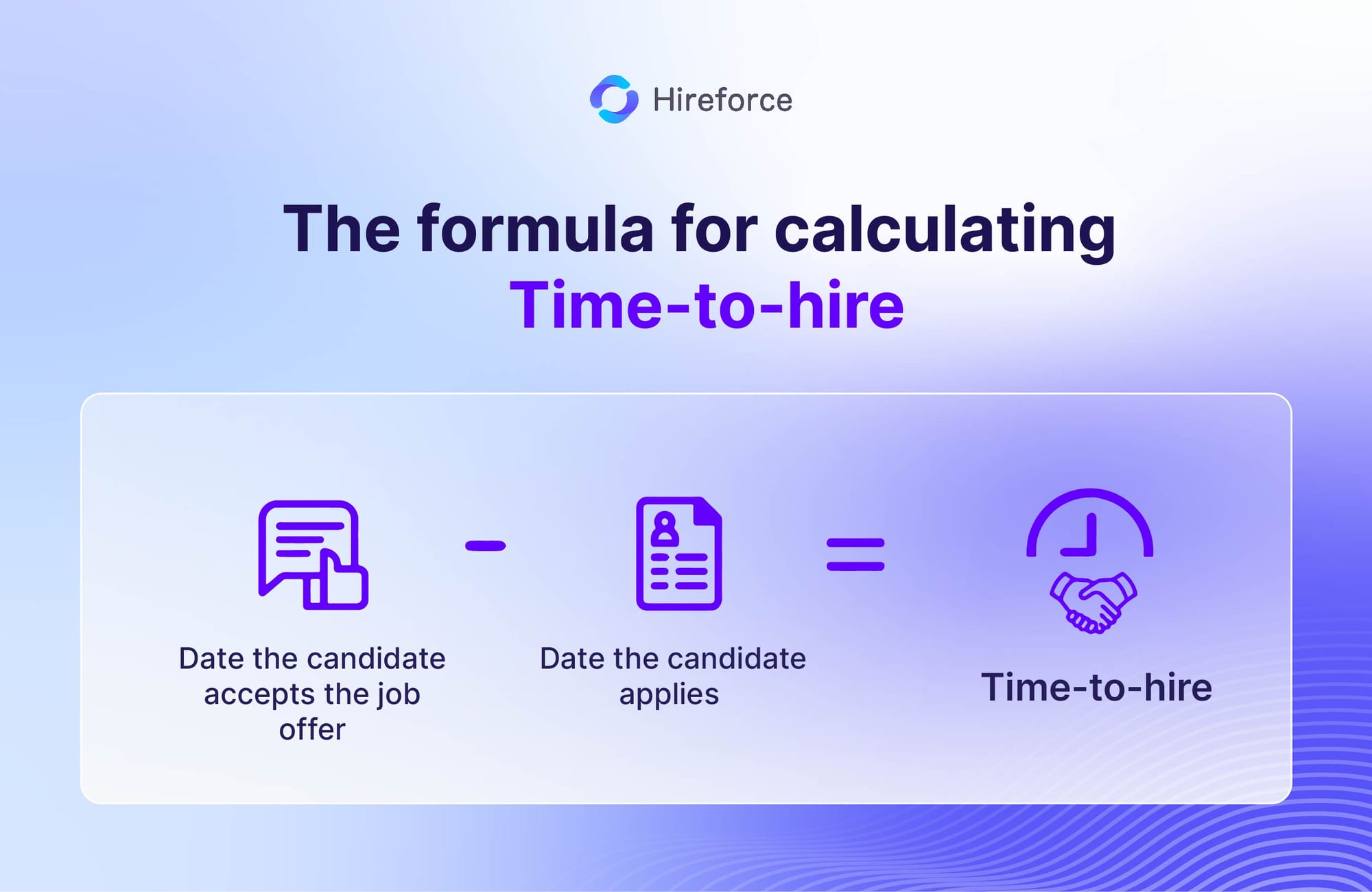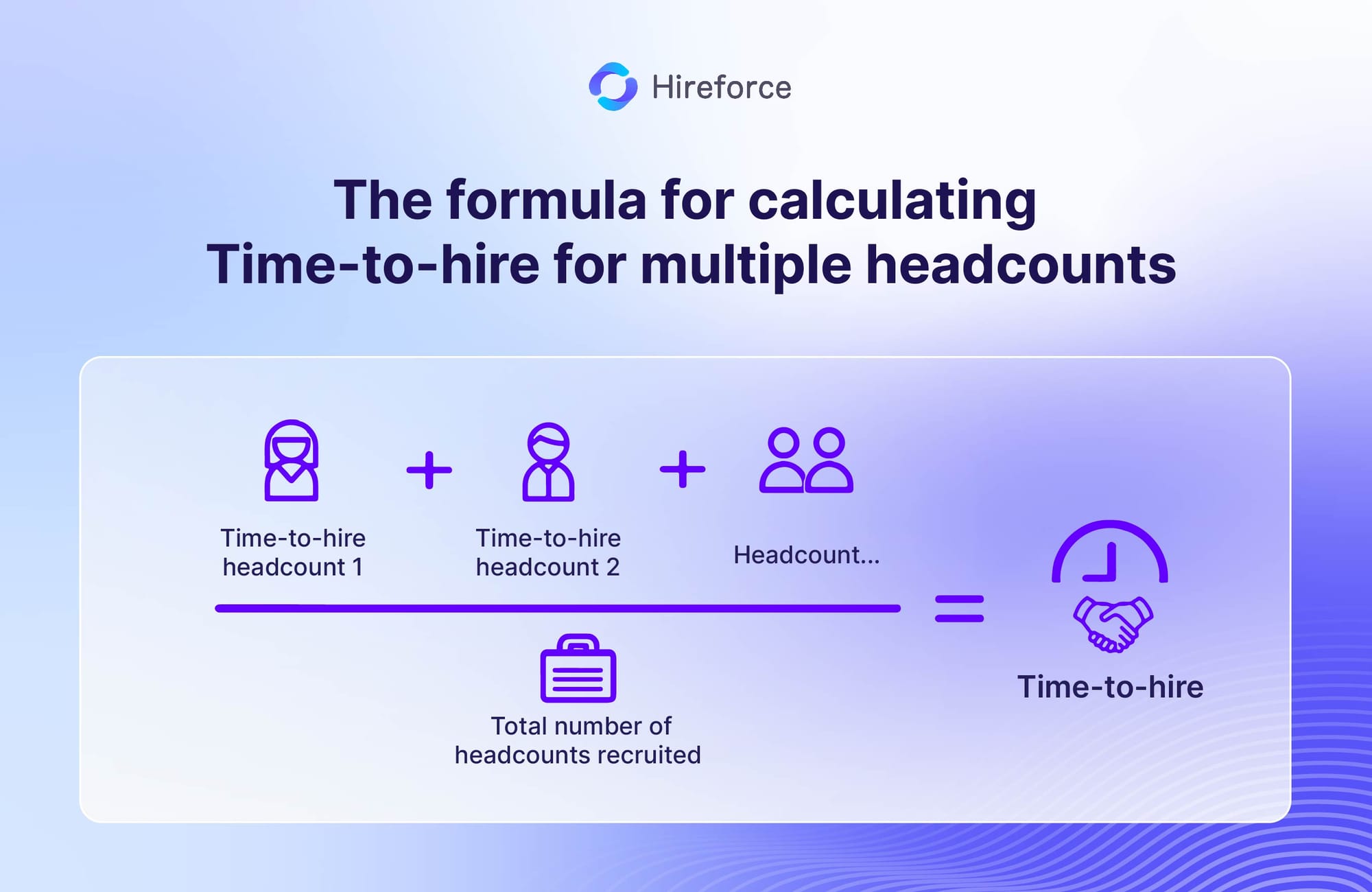In the recruitment process, Time-to-Hire (the time it takes to fill a vacant position) plays an important role in the recruitment process's efficiency and an organization's overall recruitment performance. To better understand the significance of this metric, let's explore how Time to Hire impacts various aspects of the recruitment process.
What is Time to Hire?
Time to Hire is a term used to describe the duration from when a potential candidate enters a company's recruitment system (such as an Applicant Tracking System) and submits an application to when a job offer is extended and accepted. It represents the time taken to fill a vacant position.
This metric is a significant indicator of the efficiency and effectiveness of an organization's recruitment process. A short Time to Hire suggests a swift and well-organized recruitment process, while a lengthy Time to Hire may indicate underlying issues that need to be addressed, such as delays or inefficient steps.
Is Time to Hire important?
The answer is a resounding yes. Time to Hire is not just important, it's crucial to the success of any recruitment process.
Firstly, delays in the hiring process can lead to the loss of top-tier candidates. When faced with a lengthy or sluggish recruitment experience, potential employees may feel discouraged and withdraw their candidacy, especially if competitors offer a more efficient and timely process.
Secondly, protracted hiring periods can negatively impact the experience of both candidates and recruiters. This can tarnish a company's image and reputation, making it increasingly challenging to attract and secure qualified and skilled individuals.
Why does Time to Hire affect recruiting costs?
Typically, an employee's notice period upon resignation ranges from 30 to 45 days, contingent on the terms outlined in their employment contract. Consequently, the recruitment process to fill the vacant position must be initiated expeditiously. If a suitable candidate is not secured within this timeframe, each day the position remains unoccupied represents a lost opportunity for revenue generation or production. In today's highly competitive business landscape, such losses can be substantial.
Standard job posting packages on recruitment platforms typically have a 30-day duration. If the recruitment process extends beyond this period, companies often incur additional costs by reposting the job on various websites and platforms, as well as through paid social media advertising. This escalation in advertising expenditure is directly attributable to the prolonged recruitment timeline.
Moreover, extended recruitment timelines result in a waste of human resources. Recruitment and managerial staff may devote excessive time to candidate sourcing and selection, thereby depleting the company's valuable human capital.
Prolonged Time to Hire can also necessitate increased training costs, particularly for specialized roles requiring specific skill sets.
In conclusion, the duration of the recruitment process can significantly impact a company's overall recruitment costs. Beyond the opportunity costs and advertising expenses, extended recruitment timelines result in the consumption of additional human resources and training expenditures. Streamlining the interview process and assessments can alleviate the burden on the HR department and ensure that the recruitment process operates within a more efficient budget.
The formula for calculating Time to Hire:
Date the candidate accepts the job offer - Date the candidate applies = Time to Hire

The formula for calculating Time-to-hire for multiple headcounts:

Compare Time to Hire and Time to Fill
While often used interchangeably, "Time to Hire" and "Time to Fill" are distinct metrics in recruitment, each offering valuable insights into the hiring process.
| Time to Hire | Time to Fill |
|---|---|
| Time-to-hire measures the duration between a candidate entering the recruitment pipeline and their first day of employment. In essence, it calculates how long it takes to move a candidate from the employment application. The starting point for measuring time-to-hire is the moment a candidate becomes part of your recruitment process, either through an application or proactive sourcing. | Time-to-fill, on the other hand, encompasses a broader timeframe. It calculates the duration between the creation of a job requisition and a candidate's first day of work. This period includes the time taken for requisition approval, advertising the position, sourcing candidates, conducting interviews, and ultimately extending an offer that is accepted. |
Example: Let's consider a scenario at "Hireforce." A requisition for a Full Stack Web Developer position is approved on February 1st, 2024. Candidate A applies on February 20th, 2024. After two rounds of interviews, Hireforce extends an offer, and Candidate A accepts, starting on March 1st, 2024.
In this example:
- Time to Hire is 10 days (from application on February 20th to the start date on March 1st).
- Time to Fill is 30 days (from requisition approval on February 1st to the start date on March 1st).
Understanding the nuances between these metrics provides a more comprehensive view of recruitment efficiency.
Meaning of Time to Hire &Time to Fill:
| Time to Hire | Time to Fill |
|---|---|
| The question it answers: Once you have a pool of candidates (either through sourcing or applications) for a specific position, how many days does it take to successfully hire someone? | The question it answers: How long does your entire recruitment process take, from identifying the need for a new position to having a new employee start work? |
| What it tells us: This metric reflects the efficiency of your selection process. A short time-to-hire indicates that your team can swiftly identify and secure the best candidate from a group of applicants. | What it tells us: Time-to-fill provides a broader perspective on your hiring efficiency. It reveals the total number of days required to fill a vacant position, encompassing all stages from requisition to onboarding. |
The Time to Fill metric is consistently longer than the Time to Hire metric, as the former measures the duration required for a position, from the point of approval, through the recruitment process, interviews, and the candidate accepting the job offer to commence employment.
The importance of Time to Hire
Time to Hire is a commonly used metric in human resource management to measure the duration required for a specific job opening to find and recruit a suitable candidate. By meticulously tracking and analyzing this metric, organizations can enhance various aspects of their recruitment process.
- Recruitment efficiency: Time to Hire serves as an important indicator of the company's recruitment process efficiency. A shorter Time to Hire generally signifies the company's ability to swiftly address its staffing needs, minimizing the duration of vacant positions. This, in turn, contributes to maintaining operational stability and effectiveness within the organization and its business activities.
- Recruitment quality: Time to Hire can also impact the quality of recruited candidates. In some instances, imposing stringent Time to Hire targets might lead to the selection of candidates without a thorough evaluation of their skills or suitability for the role. This could result in inappropriate choices and an increased risk of employee turnover.
- Recruitment costs: Time to Hire also influences the cost of the recruitment process. An extended Time to Hire can translate into greater resource expenditure on recruitment activities, including job advertising costs, recruitment staff salaries, and losses incurred due to vacant positions.
- New employees: Time to Hire impacts the experience of both candidates and new employees. A shorter Time to Hire can foster a positive experience for candidates, while a prolonged process might erode candidate confidence and interest in the company.
In short, Time to Hire is not merely a significant metric for gauging a company's recruitment efficiency but also influences various aspects of business operations and human resource management.




